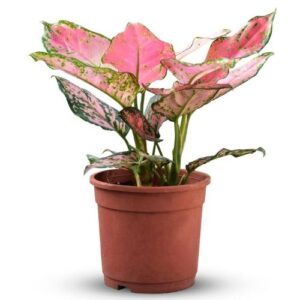No products in the cart.
- Home
- Shop
- Air Purifying Plants
- Peace Lilly
Peace Lilly
₹729.00 ₹499.00
In stock
Research conducted by NASA found the Peace Lily to be one of the top indoor plants for cleaning air. This tropical plant breaks down and neutralizes toxic gases like benzene, formaldehyde.
A long-time favorite of those with a green-thumb and even those without, Spathiphyllum, commonly known as the peace lily, is an adaptable and low-maintenance houseplant.
Water Cycle: Alternate days
Pot Size: 6 inches
Plant Size: 12 inches
Plant Care: Easy
Categories: Air Purifying Plants, Indoor Plants, Plants
Tags: Indoor plant, lily, Peace Lilly, pease lily
-

Free Gifts
Get Spray Nozel for free with every buy -

1 on 1 Support
Ask with experts -

Secure Payment
100% secure payments
Hotline Order:
Mon - Fri: 7:00 am - 18:00PM
+91 95991 23000
Peace lily houseplants are great for usage in the home or office. These lovely plants not only brighten up a living space, but they also help to filter the air. These plants are distinguished by their dark green leaves and white “flowers.” Most people confuse the bloom with a distinct leaf bract that grows hooded over the blossoms.
Sunlight
It does not require direct sunlight. A Peace lilly grows best in indirect lighting / semi-shade lighting. Direct sunlight can burn the leaves.A long-time favorite among house plant enthusiasts, researchehyde, and carbon monoxide. … If you need a jacket, your tropical plant needs one also
Temperature
The best temperatures are 68 to 77 F. (20-30 C.).
But it can survive in extreme conditions too like 30-C, but the plant will turn darkish.
Pot Water
Use tap water
Change water twice a month
Common Problems
Overwatering is one of the most prevalent mistakes in peace lily care. It is significantly more tolerant of underwatering than overwatering, which is the most common cause of death in a peace lily. As a result, you are not watering your peace lily plants on a regular basis. You should instead check them once a week. Check the soil’s surface for dryness. Water your lily if it is. The plant does not need to be watered if the soil is still damp. Some folks will even wait until their peace lily begins to droop before watering their plant. This strategy does not hurt the plant and prevents overwatering because these plants are drought resilient.
When grown in the garden in the tropical and subtropical climates where they are hardy, peace lilies are normally planted as container-grown nursery plants in the spring while it is still cool. As houseplants, they can be purchased and brought into the home at any time, though you will want to protect the plants from cold temperatures as you move them from the store to your home
Add your review Cancel reply







Reviews
There are no reviews yet.